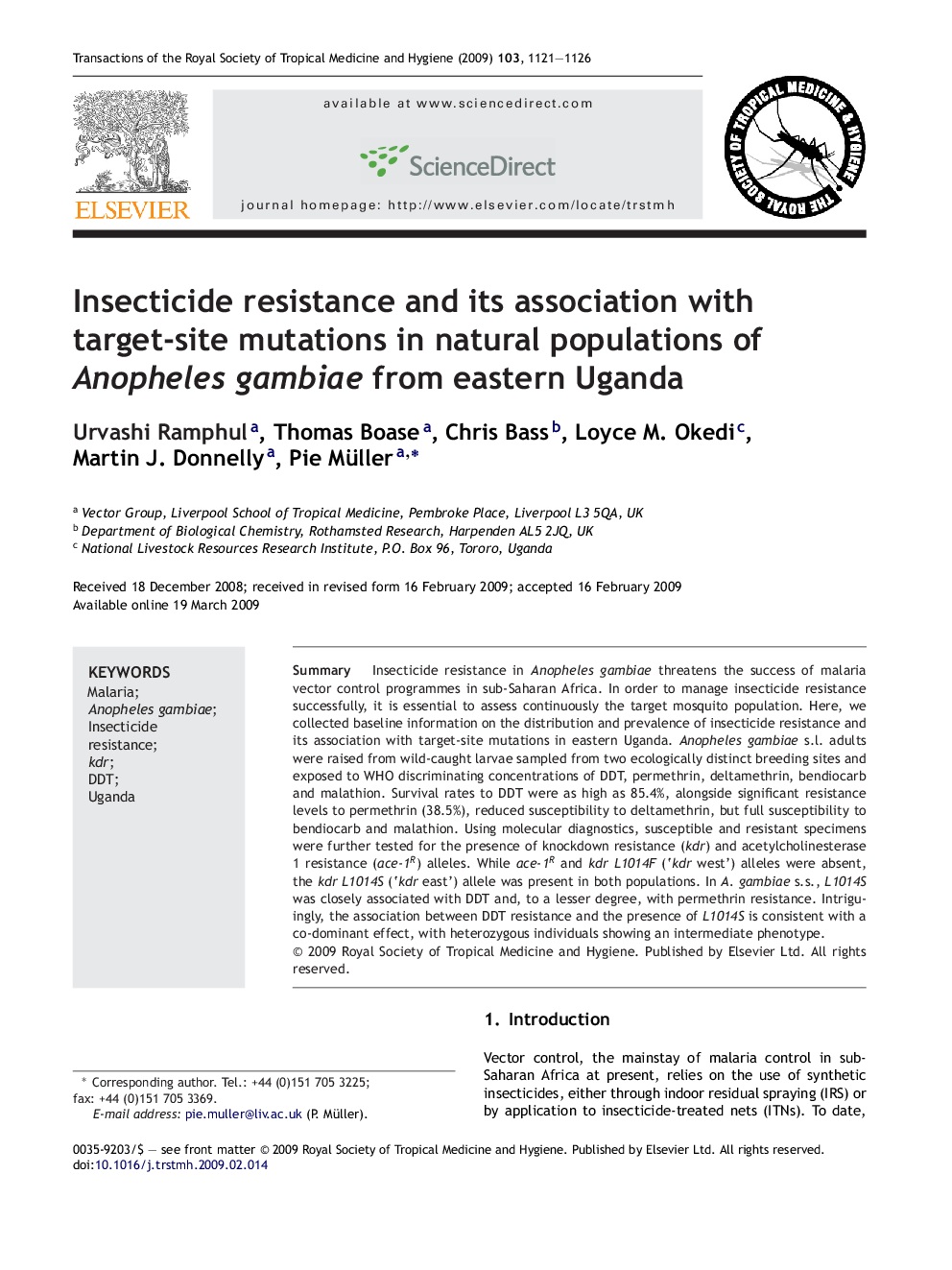| Article ID | Journal | Published Year | Pages | File Type |
|---|---|---|---|---|
| 3420569 | Transactions of the Royal Society of Tropical Medicine and Hygiene | 2009 | 6 Pages |
SummaryInsecticide resistance in Anopheles gambiae threatens the success of malaria vector control programmes in sub-Saharan Africa. In order to manage insecticide resistance successfully, it is essential to assess continuously the target mosquito population. Here, we collected baseline information on the distribution and prevalence of insecticide resistance and its association with target-site mutations in eastern Uganda. Anopheles gambiae s.l. adults were raised from wild-caught larvae sampled from two ecologically distinct breeding sites and exposed to WHO discriminating concentrations of DDT, permethrin, deltamethrin, bendiocarb and malathion. Survival rates to DDT were as high as 85.4%, alongside significant resistance levels to permethrin (38.5%), reduced susceptibility to deltamethrin, but full susceptibility to bendiocarb and malathion. Using molecular diagnostics, susceptible and resistant specimens were further tested for the presence of knockdown resistance (kdr) and acetylcholinesterase 1 resistance (ace-1R) alleles. While ace-1R and kdrL1014F (‘kdr west’) alleles were absent, the kdr L1014S (‘kdr east’) allele was present in both populations. In A. gambiae s.s., L1014S was closely associated with DDT and, to a lesser degree, with permethrin resistance. Intriguingly, the association between DDT resistance and the presence of L1014S is consistent with a co-dominant effect, with heterozygous individuals showing an intermediate phenotype.
